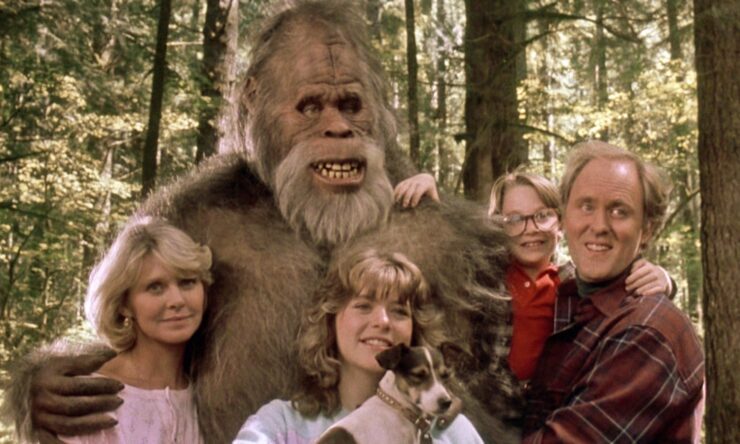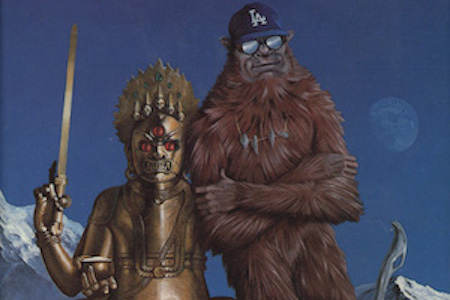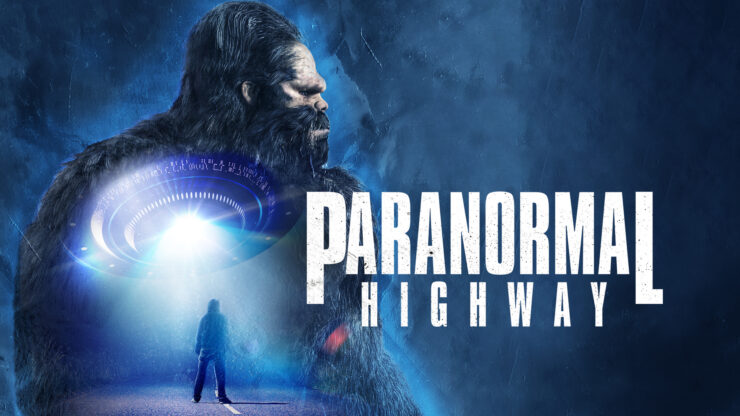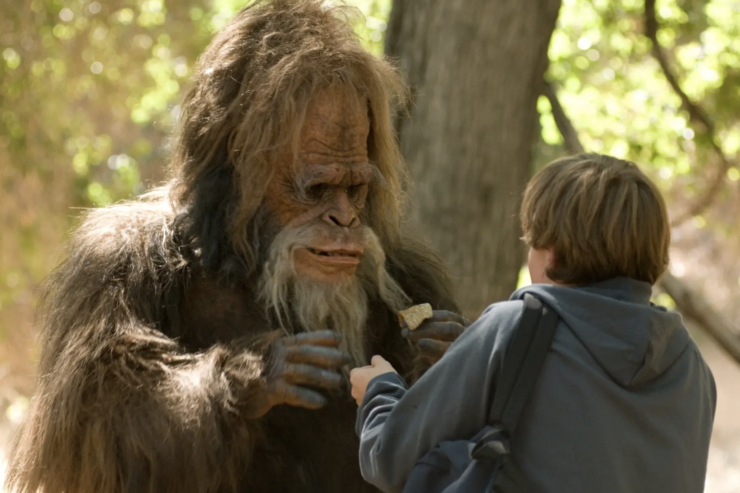You know that guy who starts to tell a story, then something he’s said sends him off on a tangent, then that sends him off on another tangent, then he remembers what he’s supposed to be talking about and pulls himself back there—until he boings off on another tangent?
That’s John Keel.
I have to hand it to Mark Pellington. He took this rambling, barely focused, somewhat incoherent book and turned it into a pretty tight little horror film. He gave Keel/Klein a fictitious wife to fridge, teased out the main line of the Mothman story, conflated a large number of characters and concepts, and kept a few of the more evocative images, notably the dream of the floating Christmas packages, and of course the collapse of the Silver Bridge. Keel’s ally and wingman Mary Hyre, the journalist of a certain age and a certain weight, becomes slim blonde Connie the helpful cop, and the many confused and confusing “contactees” as Kell calls them are conflated into the tragic Gordon.
Keel’s narrative, originally published in 1975, is only tangentially about the disaster that befell Point Pleasant, West Virginia on December 15, 1967. It serves as a jumping-off point for a whole range of theories and obsessions.
The Mothman, as Keel claims to have named him, is an ancient concept, he says; the thirteen months to the day between the first alleged encounter and the collapse of the bridge become for him the year of the Garuda, the giant bird of Hindu myth. Keel believes that there is some kind of overriding force, intelligence, whatever, that controls humans and their history. This force manifests itself in whatever form humans are ready for or inclined to. He cites a broad collection of examples, from medieval dancing mania to angels and devils to assorted cryptids, notably “hairy monsters” and giant winged creatures.
And, for the twentieth century, UFOs. Keel is openly scornful of what he calls “ufonuts,” people who believe in extraterrestrials and declare that various aerial phenomena are spaceships from other planets. That’s nonsense, in his view. It’s all the same thing, the same force or power, feeding the human imagination and feeding on it.
He doesn’t know what it is, or why, or how it exists. All he knows is that it does. He doesn’t believe in belief, either, except he believes in his theory of “ultraterrestrials” (as set forth in a later volume, The Eighth Tower). He’s a follower of Charles Fort, aka The Man Who Invented the Supernatural. Forteans as they call themselves are students of the unexplained, but they’re also proud skeptics. They may want to believe—but they want proof. Which they will devote their lives to accumulating.
Keel is convinced that whatever these ultraterrestrial forces are, they’ve singled him out for particular attention. He packs his book with examples of weird things that happen to large numbers of people, many of whom come to him and tell their stories. During the Year of the Garuda, these center (more or less) (sort of) around Point Pleasant, but they go back years or decades and jump ahead to later events and examples, and they wander all over the world and sometimes (maybe) (possibly) (or not) off it.
The Mothman is just one manifestation of the general weirdness. He’s larger than human, all grey, with a wingspan of some ten feet, and huge, glowing red eyes. He can easily keep up with a car speeding at seventy-five miles per hour. He can be aggressive, as when he attacks and scratches the speeding car, or he may simply appear in the sky, or in a yard or a field or on top of a doomed bridge. People who see him often feel an overwhelming sense of fear and terror.
He’s one of a number of paranormal beings who show up around the same time. Keel makes frequent mention of another kind of humanoid, often referred to as Men in Black, but they can present as female and they may wear other kinds and colors of clothing. They drive cars that aren’t quite right: vintage models that look and smell completely new, and they may be wearing vintage clothing that looks as new as the cars.
They may appear in different outfits and different forms of transport—flying saucers, for example—but most of them have a distinctive look. Their skin is very tan or looks sunburnt. Their faces are quite pointed in the nose and chin, and their eyes are Asian. Their fingers are exceptionally long, and they frequently wear very thick-soled shoes. They have a robotic way of speaking, ask reams of apparently disconnected questions, and seem to have trouble breathing our air.
Witnesses who have been visited by the Men in Black stop talking about what they saw. Just stop. Completely. Except Keel, who publishes his evidence and experiences, and cites multiple examples of attempts to silence him.
Both the Mothman and the Men in Black possess hypnotic powers. People who meet them may lose hours or days of memory, suddenly coming to miles or hours or even days away from where they started. That’s the standard UFO abductee story, but Keel doesn’t believe that’s what it is, any more (or less) than if they’ve been taken away by the fairies. It’s all the same thing.
What does it mean? Keel doesn’t know. He only knows that he’s been swept right into the middle of it, and whoever or whatever is orchestrating it, it watches him constantly. It knows what he’ll do before he knows he’s going to do it. He can’t hide from it. He can’t keep any secrets. It runs up enormous phone bills, impersonates him to friends and colleagues, and plays constant games with him, tricking him into going places and doing things for reasons that he never manages to understand.
The book starts off on a note of Fortean skepticism, but the language and the tone become almost feverish as he goes on. By the end he’s piling example on example, story on story, theory on theory, until there’s no way to tell what’s objectively real and what’s the product of his imagination. He’s as much a victim of whatever power this is, as any of the contactees he interviews or claims to try to help.
John Klein in the film gets closure and, apparently, the girl. All Keel gets are more questions and a rising ride of confusion. There’s no Hollywood ending, just a mystery that he never manages to solve.
Judith Tarr has written over forty novels, many of which have been published as ebooks, as well as numerous shorter works of fiction and nonfiction, including a primer for writers who want to write about horses: Writing Horses: The Fine Art of Getting It Right. She has a Patreon, in which she shares nonfiction, fiction, and horse and cat stories. She lives near Tucson, Arizona, with a herd of Lipizzans, a clowder of cats, and a pair of Very Good Dogs.














